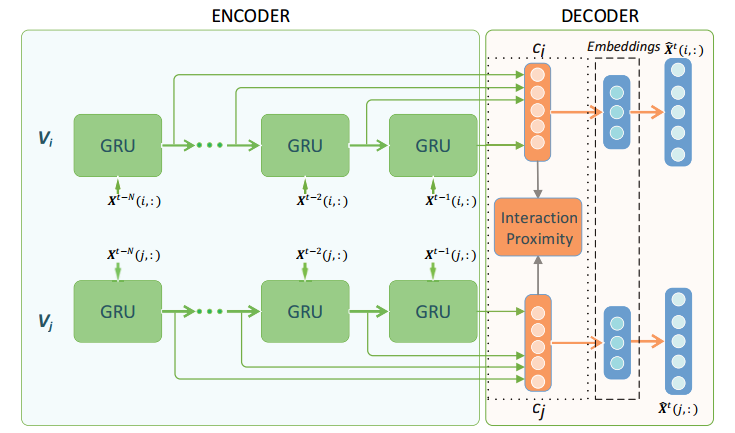Researchers at the Institute of Acoustics (IOA) of the Chinese Academy of Sciences proposed a deep learning method for node representation in dynamic networks, which can be used to compress a network and predict network state in the future.
The research was published online in IEEE Access on May.25 2018.
The embedding technology is widely used in real world. It can be adopted to compress network information to solve a big-data problem. It also has a good performance in link prediction task, which means it will be good at recommendation system. Furthermore, it can be used in protein relation analysis in biochemistry and human contact prediction in social behavioral analysis.
Network embedding task aims at learning low-dimension latent representations of vertices while preserving the structure of a network simultaneously.
Most existing network embedding methods mainly focus on static networks, which extract and condense the network information without temporal information. However, in the real world, networks keep evolving, where the linkage states between the same vertex pairs at consequential timestamps have very close correlations.
Modeling the temporal correlation faces the great challenge of non-linearity. It reflected in the links evolving nonlinearly over time in dynamic networks with periodic fluctuations.
To solve this problem, the IOA research team carefully designed the objective function to incorporate both the network internal and network dynamic transition structures. Then they proposed a deep learning framework and focused on modeling the linkage evolution in the dynamic network setting. More specifically, the method utilizes the historical information obtained from the network snapshots at past timestamps to learn latent representations of the future network.
Extensive empirical experiments proved that the proposed model was effective on various real-world networks, including a human contact network, a bibliographic network and email networks.
Furthermore, experiment results also demonstrated the significant advantages of the method, such as sufficient information integrating and high prediction ability, compared with both the state-of-the-art embedding techniques and several existing baseline methods.
Funding for this research came from the National Natural Science Foundation of China (Nos. 11590770-4, 61650202, 11722437, U1536117, 61671442, 11674352, 11504406, 61601453), the National Key Research and Development Program (Nos. 2016YFB0801203, 2016YFC0800503, 2017YFB1002803), and the Key Science and Technology Project of the Xinjiang Uygur Autonomous Region (No. 2016A03007-1).

Figure 1. Learning and inference process of link prediction. (Image by IOA)

Figure 2. Framework of deep dynamic network embedding model. (Image by IOA)
Reference:
LI Taisong, ZHANG Jiawei, YU S. Philip, ZHANG Yan, YAN Yonghong. Deep Dynamic Network Embedding for Link Prediction. IEEE Access (Epub 2018 May 25). DOI: 10.1109/ACCESS.2018.2839770.
Contact:
WANG Rongquan
Institute of Acoustics, Chinese Academy of Sciences, 100190 Beijing, China
E-mail: media@mail.ioa.ac.cn


